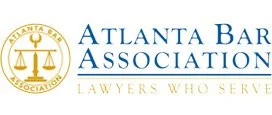How to Prove Fault and Injuries in Georgia Sideswipe Car Accident Cases
Key Points:
- The at-fault driver can be held responsible for all costs associated with the crash, including medical expenses, lost income, pain and suffering, or wrongful death.
- Sideswipe collisions occur daily on Atlanta’s roadways and have the potential to produce catastrophic injuries.
- Proving who was at fault is an essential step to building a strong legal claim for damages, but it can also be difficult to determine the facts in these scenarios.
What is a Sideswipe Accident?
A sideswipe collision occurs when the side of your vehicle makes contact with the side of another vehicle. The nature of the impact in a sideswipe accident can vary significantly, ranging from superficial cosmetic damage to severe structural damage that affects the vehicle’s integrity and safety features. The extent of damage often depends on factors such as the speed of the vehicles involved, the angle of impact, and the specific areas of the vehicles that make contact.
Where Sideswipe Accidents Frequently Happen
You can get into a side-swipe accident in a variety of situations, each with its own set of challenges and potential consequences. Here are 12 different scenarios that often result in side-swipe accidents:
Merging Lanes on Highways
When attempting to merge into a lane, misjudging the distance to an adjacent vehicle can lead to a sideswipe accident. This scenario is further complicated by factors such as traffic density, the merging vehicle’s speed, the driver’s experience, and the size and maneuverability of the vehicles involved.
Determining Fault: The person attempting the merge is usually at fault because they misjudged the distance between vehicles.
Severity Potential: Moderate to High
Accident Frequency: Common due to high speeds and complexities of merging safely.
Georgia Traffic Laws Broken:
- O.C.G.A. § 40-6-123: Not signaling when changing lanes.
- O.C.G.A. § 40-6-48: Haphazardly moving from a lane.
Changing Lanes in Traffic
If you fail to check your blind spot or signal before changing lanes, it is easy to accidentally clip the side of another driver’s car.
Determining Fault: The driver who does not check their blind spot or use their signal before changing lanes is usually considered at fault.
Severity Potential: Low to Moderate
Accident Frequency: Very common in urban and suburban areas due to frequent lane adjustments.
Georgia Traffic Law Broken: O.C.G.A. § 40-6-48: Moving from a lane without ascertaining that such movement can be made safely.
Parallel Lane Drift
If you are distracted or fatigued, you can drift into a neighboring lane, thus sideswiping a vehicle traveling in the same direction.
Determining Fault: If a driver is distracted or fatigued, they are generally at fault for the side-swipe collision.
Severity Potential: Low to High
Accident Frequency: Somewhat common due to distraction, fatigue, and impairment.
Georgia Traffic Law Broken: O.C.G.A. § 40-6-48: Lack of vehicle control.
High-Speed Sideswipe
You may run the risk of more severe sideswipes when traveling on highways or interstates at high speeds.
Determining Fault: Fault can be complex to determine, but it often lies with the driver who made an unsafe lane change or failed to maintain proper lane discipline at high speeds.
Severity Potential: High
Accident Frequency: Less common
Georgia Traffic Laws Broken:
- O.C.G.A. § 40-6-181: Exceeding the speed limit.
- O.C.G.A. § 40-6-48: Failure to maintain lane.
Urban Traffic Sideswipe
It is easy to make a slight misjudgment or get distracted in congested city traffic, leading to sideswipe accidents.
Determining Fault: The driver who misjudges or becomes distracted is usually found liable.
Severity Potential: Low to Moderate
Accident Frequency: Very common due to diverse traffic dynamics.
Georgia Traffic Law Broken: O.C.G.A. § 40-6-48: Failure to maintain lane in congested urban areas.
Construction Zone Sideswipe
If you fail to adjust your lane position appropriately in construction zones, you may end up in a sideswipe accident.
Determining Fault: The driver who fails to adjust their lane position appropriately is usually at fault.
Severity Potential: Moderate to High
Accident Frequency: Moderately common due to confusion in construction areas.
Georgia Traffic Laws Broken:
- O.C.G.A. § 40-6-188: Speeding in a construction zone.
- O.C.G.A. § 40-6-48: Failure to obey restrictions in a construction zone.
Multi-Vehicle Sideswipe
During heavy traffic conditions, a sideswipe accident may trigger a chain reaction leading to multiple vehicles being sideswiped.
Determining Fault: The driver who initially causes the sideswipe, setting off the chain reaction, is typically considered at fault for the subsequent collisions.
Severity Potential: High
Accident Frequency: Occur less frequently and involve a combination of collision types.
Georgia Traffic Laws Broken:
- O.C.G.A. § 40-6-48: Failure to maintain lane.
- O.C.G.A. § 40-6-40: Failure to follow rules governing multi-lane highways.
Sideswipe During Passing
You may sideswipe a vehicle if you misjudge the necessary clearance needed to overtake it.
Determining Fault: The vehicle that fails to overtake another vehicle with sufficient clearance is likely at fault for causing the sideswipe.
Severity Potential: Moderate to High
Accident Frequency: Common in areas with two-lane roads.
Georgia Traffic Law Broken: O.C.G.A. § 40-6-40: Overtaking and passing another vehicle without ensuring it is safe to do so.
Sideswipes in Roundabouts and Intersections
If you misunderstand right-of-way rules or fail to maintain your lane while navigating roundabouts or intersections, you may get into a sideswipe collision.
Determining Fault: The driver who misunderstands right-of-way rules or fails to maintain their lane while navigating the roundabout or intersection is usually considered at fault.
Severity Potential: Moderate
Accident Frequency: Moderately common due to the regularity of misunderstanding right-of-way.
Georgia Traffic Laws Broken:
- O.C.G.A. § 40-6-71: Not yielding to oncoming traffic at intersections.
- O.C.G.A. § 40-6-72: Failing to adhere to roundabout right-of-way rules.
Inclement Weather Sideswipe
If you experience poor visibility, slippery roads, or unexpected gusts of wind during bad weather conditions, you might lose control and sideswipe adjacent vehicles.
Determining Fault: The driver who loses control under poor weather conditions is generally at fault, as drivers are expected to adjust their driving to match conditions.
Severity Potential: Moderate to High
Accident Frequency: Adverse weather increases the likelihood of sideswipe accidents.
Georgia Traffic Law Broken: O.C.G.A. § 40-6-180: Driving too fast for road conditions, failing to adjust speed for weather conditions.
Aggressive Driving Sideswipe
If you are prone to taking aggressive maneuvers, such as weaving through traffic without adequate space, you might unintentionally sideswipe other cars.
Determining Fault: The aggressively maneuvering driver, weaving through traffic without adequate space, is typically at fault for causing a sideswipe.
Severity Potential: High
Accident Frequency: Moderately common due to the regularity of aggressive drivers.
Georgia Traffic Law Broken: O.C.G.A. § 40-6-397: Operating a vehicle with the intent to annoy, harass, molest, intimidate, injure, or obstruct another person.
Blind Spot Sideswipe
If another driver changes lanes without seeing you in their blind spot, you might get into a sideswipe collision.
Determining Fault: The driver who changes lanes without realizing another vehicle is in their blind spot, leading to a collision, is usually considered liable.
Severity Potential: Low to Moderate
Accident Frequency: Very common because many drivers fail to check their blind spots properly before changing lanes.
Georgia Traffic Law Broken: O.C.G.A. § 40-6-48: Changing lanes without ensuring the move can be made safely, typically failing to check or properly interpret blind spots.
Sideswipe Vehicle Collisions and Resulting Injuries
Why Are Injuries Possible in a Sideswipe Accident?
Injuries can occur in a sideswipe accident for a few reasons.
- The jolt could throw you against the car doors or passengers, causing cuts, broken bones, or other injuries.
- The sudden shake can hurt your neck or back because your body gets whipped from side to side.
- Sometimes sideswipes cause airbags to deploy, which can cause injuries like burns or broken bones.
- Your car might lose control, causing it to crash into other cars, road barriers, or objects, making injuries worse.
Is the Side of a Vehicle More Protective than Its Rear End in a Collision?
Side collisions and swipes are usually more damaging than rear-end or front-end collisions. Cars are designed with special zones that crumple in a way to absorb the shock of a crash, keeping the force away from people inside the car. The sides of a car, however, do not have as much room for these safety features, making passengers more vulnerable during sideswipe accidents.
Do Airbags Offer Protection in a Sideswipe Accident?
Although airbags can help protect you in a sideswipe accident, how well they work depends on the specifics of the crash and the type of airbags your car has.
- Side curtain airbags: These will come from the side of your car, protecting your head from hitting your car’s windows or sides.
- Side torso airbags: These are built into the sides of seats to protect your mid-body.
- Front airbags: These will only deploy if the hit is straight on enough to trigger them.
Airbags work best when you’re also wearing your seatbelt. Seatbelts keep you in the right spot so the airbags can do their job best, stopping you from hitting your car’s interior or being thrown out of the car.
What Types of Injuries Are Typically More Prevalent in Sideswipe Collisions Compared to Rear-End Collisions?
In sideswipe accidents, occupants might experience:
- Head and Neck Injuries: Due to the lateral movement of the vehicle upon impact, you or other passengers can suffer from whiplash, concussions, or other head injuries.
- Upper Body Injuries: The side impact can cause shoulder, arm, and rib injuries as your body is thrust against the door or window.
- Abdominal and Pelvic Injuries: The force exerted on the side of the vehicle can lead to injuries in your abdominal or pelvic areas.
- Lower Limb Injuries: Your legs and knees can also be injured in sideswipe collisions due to the intrusion of the vehicle’s structure or dashboard components.
How Do You Prove Liability in a Sideswipe Accident?
Establishing liability in a sideswipe collision entails a meticulous approach to demonstrating which party’s negligence contributed to the incident. Here’s a streamlined strategy for achieving clarity on fault:
- Document the Incident: Immediately after the collision, photograph vehicle positions, roadway conditions, skid marks, and any pertinent signage.
- Secure Witness Testimonies: Obtain contact details and accounts from eyewitnesses.
- Obtain a Police Report: Ensuring law enforcement officials document the accident is paramount. The report will detail the incident and provide the officer’s assessment of fault.
- Surveillance and Traffic Camera Footage: Investigate the presence of any operational traffic or security cameras that may have captured the collision.
- Analyze Vehicle Damage: The pattern and extent of damage on the vehicles can explain the mechanics of the collision.
- Employ Accident Reconstruction Specialists: For complex cases, leveraging the expertise of accident reconstruction professionals can be invaluable to provide a scientifically based interpretation of the accident.
- Examine Cell Phone Records: If you suspect the other driver may have been distracted, procuring the cell phone records of the involved parties may demonstrate engagement in distracting activities at the time of the accident.
- Legal Interpretation of Traffic Regulations: Demonstrating a party’s non-compliance with traffic laws can effectively establish their negligence.
What Obstacles Do Car Accident Attorneys Encounter While Establishing Fault in Side-Swipe Collisions?
- Insufficient Physical Evidence: The damage may not clearly indicate the direction of the impact or which vehicle was at fault, making it difficult to reconstruct the accident accurately.
- Conflicting Claims: Because these incidents frequently occur when vehicles are merging or changing lanes, both drivers may claim to have had the right of way.
- Subjective Witness Testimonials: Witness testimonies and the drivers’ accounts of the event may vary widely. In the absence of definitive physical evidence, attorneys must often rely on these accounts, which can be influenced by the stress of the accident and personal biases. Dashcam footage or nearby surveillance video can be invaluable in these cases, but such footage is often unavailable.
- Complicated Traffic Laws. Attorneys must navigate the complexities of state-specific traffic laws to effectively argue negligence or liability.
















